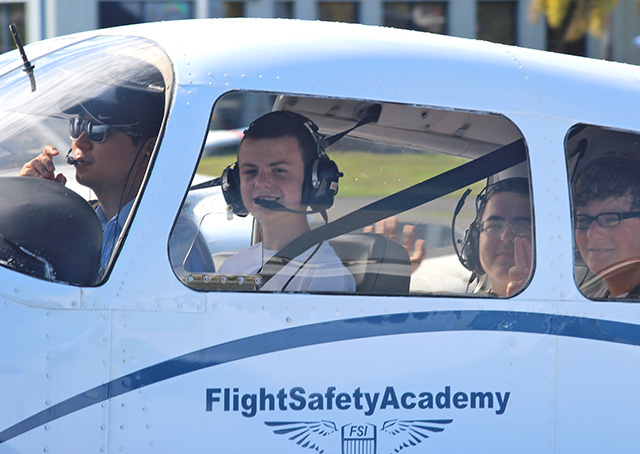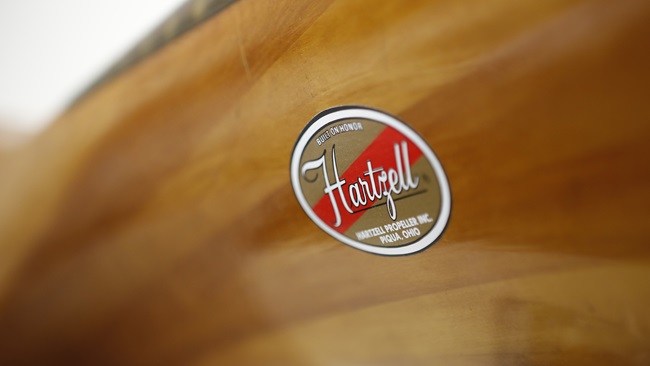
Parents with science, technology, engineering, and math-minded youth have a variety of STEM-based summer camps to choose among for budding aviators. Campers might not even realize they are soaking up valuable concepts that can cement a lifelong love for aviation.
Younger campers attending STEMtastic five-day camps for ages 7 to 11 at Lakeland Linder Regional Airport’s Sun 'n Fun Aerospace Center for Excellence are exposed to robotics, programming, airplanes, rocketry, wave forms, and nature. Older campers ages 11 to 18 may enroll in Destination Aviation Camp, which adds physics, cross-country flight planning, and weather.
“The common theme is that the airplane is a great platform for STEM education and we use it in that fashion,” said John Iskra, the central-Florida facility’s education director. The week of activity includes classes held inside the fuselage of Paul, a retired Piedmont Airlines Boeing 727 triple-engine jet donated to the facility by airline founder Tom Davis.
Three days of ground school followed by a field trip to fly simulators while earning stick time in a Piper Cherokee is a real attention-getter for more seasoned campers. “For an 11-year-old to have 20 minutes of dual on the flight over to Flight Safety International, it’s not such a bad deal. On Friday, after lunch, students are invited to teach back to their parents and act as tour guides. It’s a fun part of the day,” Iskra said.
Iskra said both sets of aviation camps teach fundamentals of flight that parallel sports camp skill clinics. The difference is that “aviation campers can tell their friends, ‘Hey, I flew an airplane,’ and then show them a logbook or pictures.” Practicing safety and go/no-go decisions, Iskra said, can also lead to “a rise in self-confidence.”
Counselors typically count on contingents from the nearby states of Georgia, Alabama, and Mississippi, and campers from as far away as Italy, France, and Canada have attended one of the six summer sessions priced from $150 to $675.
Triad Aviation Academy’s AeroCamp, further up the East Coast in North Carolina, offers young aviation aficionados hands-on weather forecasting experiments, introductions to flight dynamics, and underground tours of Greensboro’s Piedmont Triad International Airport.
Flight time in a Discovery Aviation XL-2 single-engine aircraft highlights Triad’s week of aviation activity, said AeroCamp Director, flight instructor, and author MayCay Beeler, who was enthusiastic about the inaugural camp in 2015. Beeler earlier told AOPA that instructors encouraged “kids to learn, but we want them to be passionate, so it has to be fun for them.” She said the program most assuredly wasn’t “your father’s summer camp.” Previous day-trips included a tour of a FedEx cargo jet, a visit to a mountain airport in Virginia, and other nearby aviation-themed locations. There are seven AeroCamp sessions for young people ages 12 through 16, priced from $599 to $799, including a visit to Kitty Hawk’s birthplace of aviation.
Summer camps at Air Zoo “are the coolest camp offerings in West Michigan,” and they combine science, art, and educational programs grouped by grade level from kindergarten through high school. Younger campers experiment with electricity or scope out wildlife and insects, while older youths participate in “Mission Possible” sessions including rocketry, biology, robotics, and aviation restoration.
The facility describes itself as “like no place else on Earth,” and the Air Zoo showcases 50 different aircraft. Displays at the Portage, Michigan, facility range from vintage World War II fighters to the SR-71B Blackbird, known as “the world’s fastest airplane.”
The Air Zoo offers campers additional learning environments with an interactive tiger-tracking exhibit and hands-on aircraft refurbishment opportunities. More experienced campers may assist a “professional restoration crew at the Air Zoo to help bring the Wildcat that was recently raised from the bottom of Lake Michigan closer to exhibit condition,” says the Zoo’s summer camp website. Aviation skills such as wing rib building, fabric covering, and cable swaging help round out the western Michigan summer camp curriculum priced from $50 to $250.
Further west, South Dakota State University’s ACE Camp academies have been attracting high school aviators to the college’s four-day July camp experience since 1992.
ACE Camp’s reference materials explain that career-minded young aviators can utilize the experience as a launching pad “to make informed decisions as they consider college and career options.”
The camp is sponsored by NASA and other businesses and hosted by the college. ACE Camp allows participants to “get behind the controls of an aircraft”; visit with aviation professionals; and learn about jet engines, rocketry, and aerospace careers. Partial scholarships for the $350 tuition are available.
Additional aviation summer camp opportunities are available from the Experimental Aircraft Association and the Civil Air Patrol.




